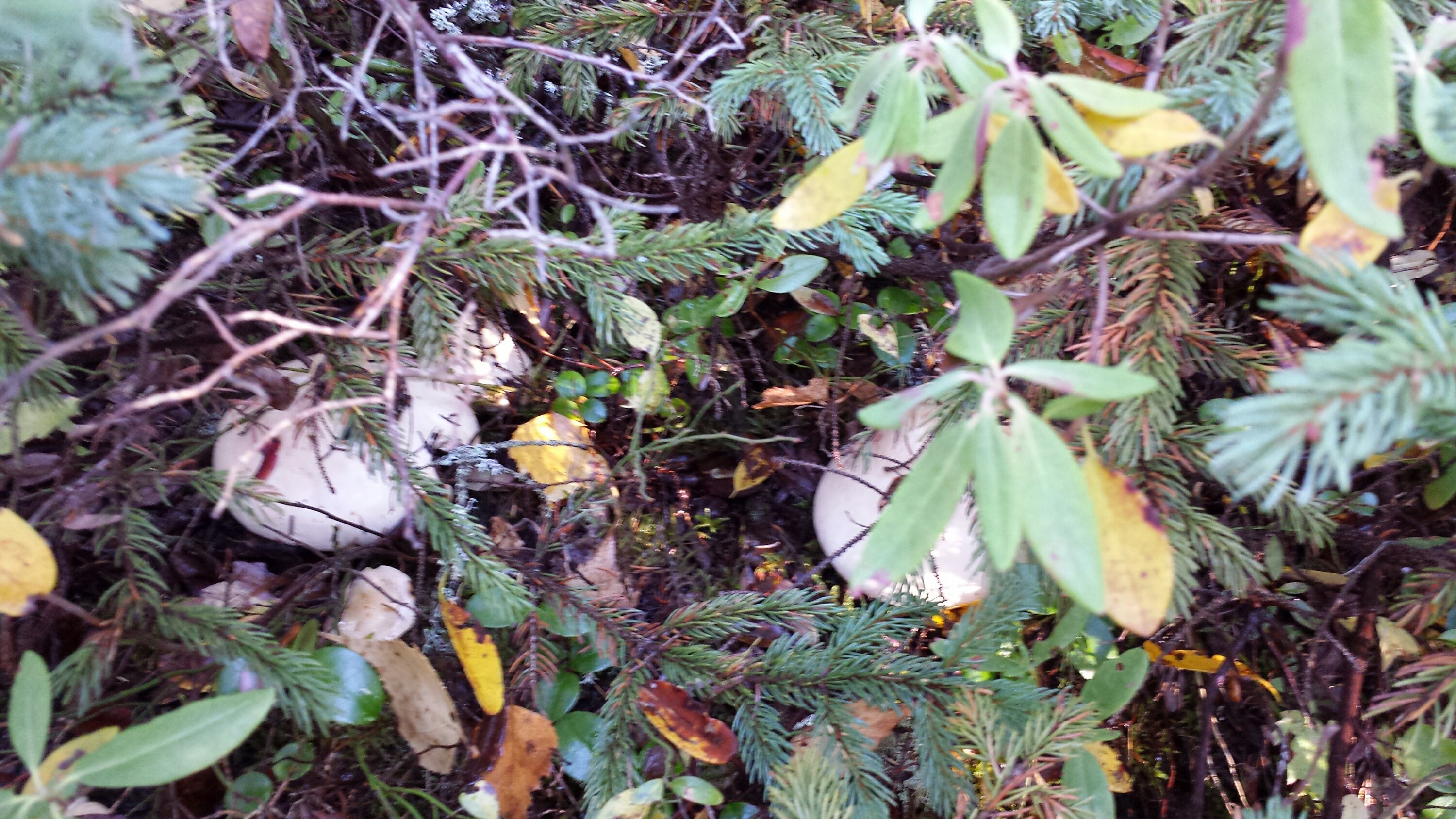
A rainy, windy day here in New Brunswick, Canada with a few large conifers snapping their trunks in the forest this afternoon close beside me, later on we have a very good chance of seeing some snow on the ground early tomorrow, but for now let’s look at this large fall mushroom.

Here we see the mushroom basket with mostly Sheep polypore and the big mushroom I want to introduce here today, also to the right are some fading bunchberry plants and the tiny round leaf plant below which is sometimes called Creeping Snowberry (Gaultheria hispidula) and I must mention these leaves do make a nice wintergreen tasting tea. Click on the photo for a better look.

Now back to a time when there wasn’t anything in the basket, with me starting out to notice why in some parts of Europe this mushroom is known as the potato mushroom, but until I removed the stem from the moss and soil I wasn’t quite sure what this mushroom was as the cap alone resembles a large version of both the White Matsutake and also the Swollen-stalked Cat.

Oh, this one is the Imperial Cat, (Catathelasma imperiale) – quite striking isn’t it.

I’ve been finding just a few of these mushrooms for the last month in this area which is new to me this year so it is interesting to piece together what this edible is known as in other areas of the world. In mountainous areas of Asia and Western N.A this mushroom is mostly known as the Big Cat or Imperial Cat. It is gathered and sold in Markets in Asia and also exported as a food and as a medicinal product, but in North America it is barely considered edible and rarely gathered with its close relative the Swollen-Stalked Cat considered the better edible, as for Europe where it is eaten usually pickled or preserved in oil before consuming. The texture is firmer than most edible mushrooms and I do see that in one very well known Hotel restaurant in Hong Kong it is a key ingredient in one of their Fall season soups.




Here is a look at the Maritime’s 2 Catathelasma species, C imperiale on the left and C ventricosum on the right. As a rule they seem to be of similar size though the C imperiale I found today did weigh close to 1 lb which is much larger than the usual ones I find. As you can see there are a few differences in flesh, gill and cap colors, but for me the stem ring and the small area directly above it are very different especially in the young mushrooms, click on to see this. So keep an eye open for these not so rare big Maritime Cats many think only live in the mountains out in the western part of NA . ciao
Tags: Big Cat, Catathelasma imperiale, Imperial Cat, NB foraging, potato mushroom



















































